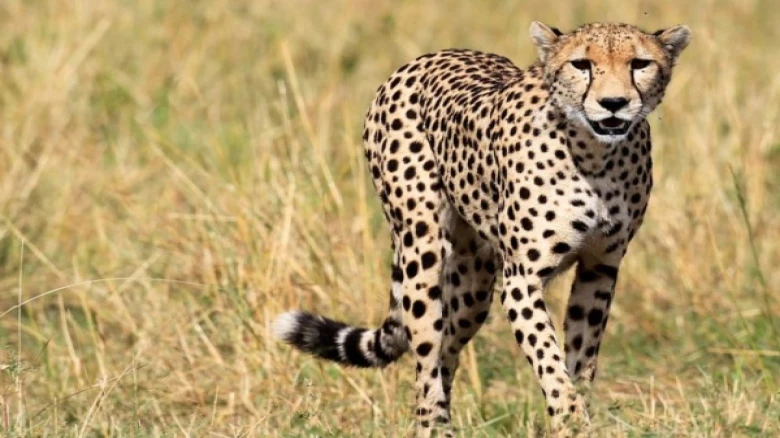Regional

The Namibian female cheetah that was relocated was discovered dead on Wednesday morning, bringing total number of cheetah deaths to nine...
Digital Desk: A Post-mortem report made public on Friday reveals, the female cheetah Dhatri at the Kuno National Park (KNP) succumbed to death from an infection brought on by a maggot infestation, generally known as "myiasis".
On Wednesday morning, the female cheetah relocated from Namibia was discovered dead, bringing the number of cheetah deaths at KNP in Madhya Pradesh to nine.
The other 14 cheetahs, including a cub, are in the enclosure. There were two female cheetahs in the wild, Dhatri and Nirva.
According to officials familiar with the study, this is the third cheetah that has died at the KNP from myiasis.
"Dhatri (Tbilisi), a female cheetah from Namibia, has passed away. Barth Balli, the manager of CCF's conservation release programme, followed her for ten days in order to get close enough for a recapture. Even though he was unable to capture her, he could see that she had been successful in her hunt, tweeted Cheetah Conservation Fund (CCF).
The cause of death was an infection brought on by a maggot infestation, also known as myiasis, according to a post-mortem examination carried out by the CCF in collaboration with the veterinary team at Kuno National Park.
The CCF also stated that since the focus was on developing and testing better collar materials for their monitoring systems, the radio collars around their necks had also been removed, which is why they were discovered to be infected.
A description of the cause of death The quick incubation rate of fly eggs and the larvae's camouflage makes early detection difficult, according to CCF. These larvae mature quickly in a matter of days, and myiasis is a phenomenon that is not peculiar to cheetahs; it is also seen in people. It is more common during the wet seasons in dry settings like Namibia or in rural areas with tropical climates like India, CCF further added in their statement.
"Ensuring the welfare of these wonderful creatures and facilitating their successful reintegration into their native habitat is our top goal. Drawing on prior release studies carried out between 2004 and 2018, we discovered a high success rate of chosen persons reaching independence after release ranging from 75% to 96%," according to CCF.
In the meantime, South African specialists have advised the government in a report to take precautions like shaving off the winter coat to be prepared for any form of infection.
All of the remaining 14 cheetahs—seven males, six females, and one female cub—are housed in bomas at KNP, and the Namibian specialist and the Kuno wildlife veterinarians team periodically check on their well-being.
Two of the surviving animals—most of which were captive-bred—were housed in the six square kilometre cage. Three of the four pups that a Namibian cheetah gave birth to in India have passed away. Currently, Kuno is home to 15 cheetahs, one of which is a cub.
Leave A Comment